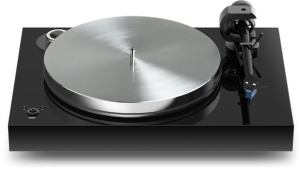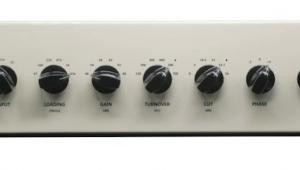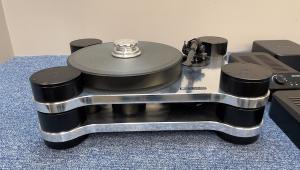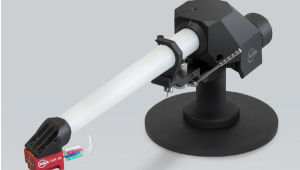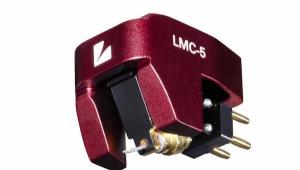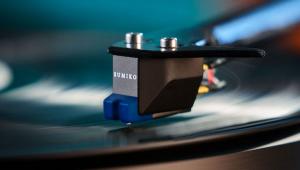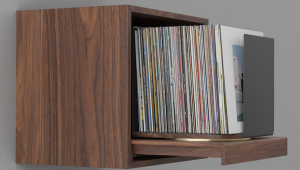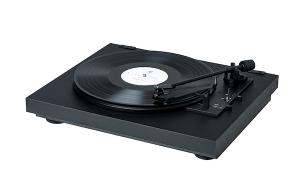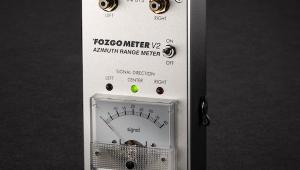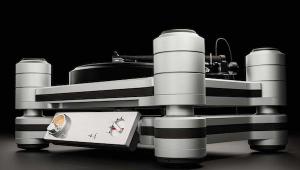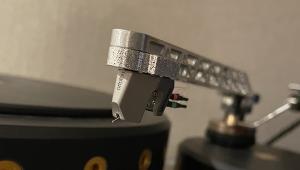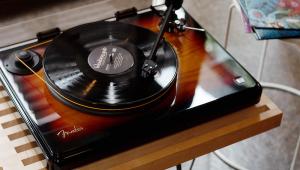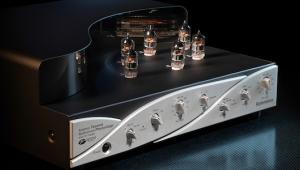Nice to see Sean brought his very rare 24" 454 gram pressing of The Firebird!
Capital Audiofest Show Report, Part 2
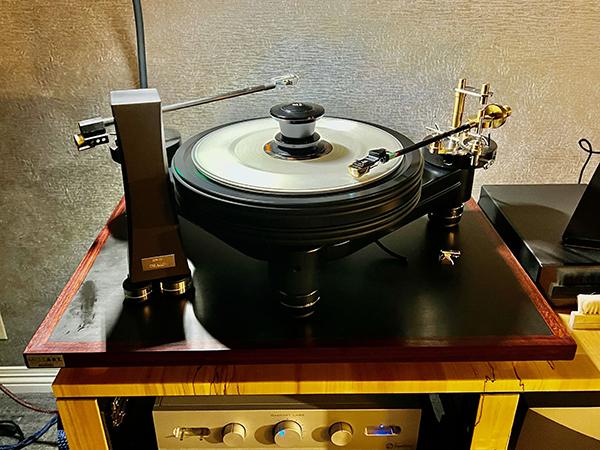
Welcome to another helping of analog highlights from Capital Audio Fest (CAF), which was held November 10-12, 2023, at the Twinbrook Hilton in Rockville, Maryland. As we noted last week in Part 1, CAF has expanded to a reported 114 exhibit rooms across more than four floors in addition to various conference rooms throughout the hotel. And with that, let’s get right into Part 2!
MODWRIGHT INSTRUMENTS & SOTA
SOTA, a hi-fi manufacturer based in Delavan, Wisconsin, makes everything in-house. The company also makes electronics, but they’re best known for their turntables. All of the real woods used for their plinths come from fallen trees, and are kiln-dried. The ModWright Instruments demo in Suite 716 presented a SOTA Cosmos Eclipse turntable ($10,500) with an SME V 9in tonearm ($5,700) and an Ortofon Windfeld Ti MC phono cartridge ($5,999). (If memory serves — and someone please correct me if this is not the case — SME are no longer selling their tonearms à la carte, although they’re still making high-end turntables.)
Dan Wright showed an updated version of his eponymous ModWright PH 9.0X T phono preamp ($5,250) with a tube configuration of 2x 6C45s and 2x 6922/6dj8/7308 tubes and an upgraded an external power supply utilizing a 5AR4 rectifier tube representing the T upgrade, along with a high-voltage pre-regulation stage. The preceding X upgrade from 2021 includes Lundahl 1660S output transformers that Wright said eliminates a pair of chokes and coupling capacitors from the signal path. There’s also 6dB more gain than in the PH 9.0, and both X and T upgrades are available for the PH 9.0 phono.
The PH 9.0 has separate MM and MC inputs, user-adjustable gain (0, –6dB, –12dB), and changes to loading for MC cartridges can be made on the fly, with settings of 10, 20, 50, 100, 250, and 470ohms. The setup also included an analog bridge with an XLR balanced upgrade ($3,900) and two selectable RCA inputs and RCA outputs. It uses 6922 or 6SN7 tubes in separate circuits and a 5AR4 tube-rectified power supply.
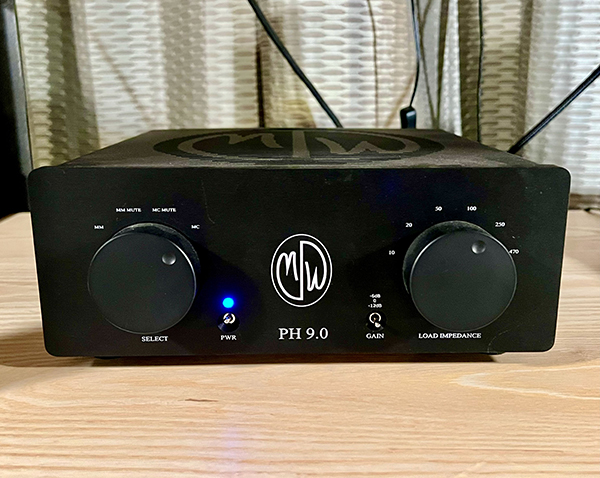
Another ModWright PH 9.0X phono stage ($4,750, for the pre-T upgrade model) was in a system in Fern & Roby Audio’s room. This was not unexpected, as Fern & Roby founder Christopher Hildebrand’s sister company Tektonics machines chassis for ModWright along with some other hi-fi companies (in addition to other machining and product development work across other industry verticals).
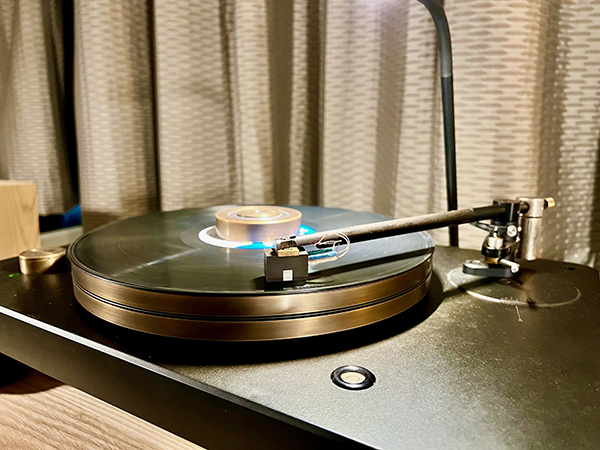
The analog setup included a Fern & Roby Montrose Heirloom turntable with the upgrade Schröder CB tonearm ($14,950) with a Sculpture A A.3P Ebony cartridge ($4,535). Fern & Roby also presented their new Amp NO. 2 integrated amp ($8,500) that powered the Fern & Roby Raven III speakers ($8,500/pr) with single drivers. Black Cat Cables — a company that Hildebrand has assisted with, following founder Chris Sommovigo’s sudden passing in August of last year — connected the system, which was supported on Fern & Roby’s Ash equipment racks.
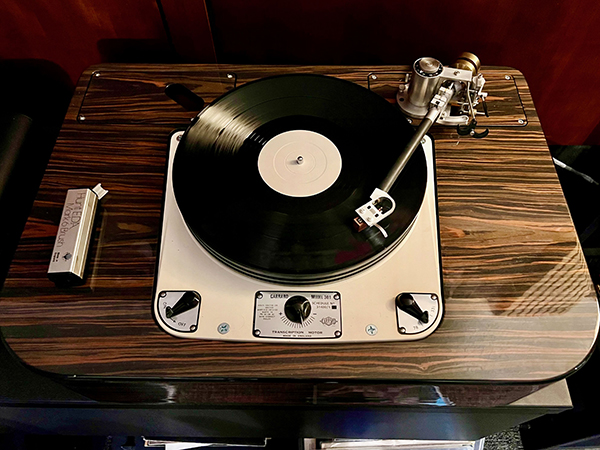
DÉJA-VU AUDIO & GARRARD
The aptly named Déja-Vu Audio presented some unique vintage-hybrid gear, including a custom-built Garrard Model 301 turntable body ensconced in an oversized plinth made of Makassar ebony wood veneer over plywood. Though it somewhat dwarfed the restored (as in, mechanically rebuilt) early Garrard, it looked — and sounded — pretty cool.
The rest of the rig included a circa-1993 9in Tri-Planar U2 tonearm (formerly referred to as a Wheaton Tri-Planar) designed by the late Herb Papier and a Koetsu Rosewood cartridge, whose signal was amplified by a custom “Aldo” preamp with MM and MC phono preamp ($27,000). Housed in a WWII-era steel Western Electric chassis from a General Radio communications component, the Aldo contains NOS (a.k.a. new old stock) parts, including Western Electric tubes — 311B tubes in the line stage, and 310A and 328A tubes in the phono stage — plus old carbon resistors, etc. These industrial-looking units are hand-built in Puglia, Italy as follows: Déja-vu sends Aldo the parts and chassis, Aldo assembles the units, and ships them back. Pickers tend to source rare vintage parts that are prized for their purported “weightier” sound compared to their modern counterparts, as some feel that vintage steel sounds better than aluminum. Like, say, Italian cooking, it’s all about sourcing the right ingredients for tastier outcomes.
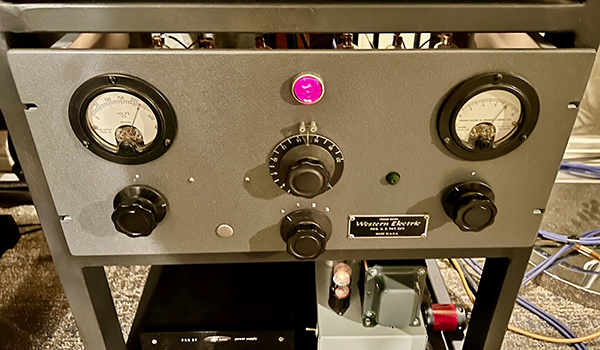
In this room, I also noticed a record on the floor in a plain white sleeve. The only markings on it, which were handwritten, identified it as a remix of Hot Chocolate’s Top 5 1975 hit single “You Sexy Thing,” so onto the custom Garrard turntable it went. It was a 45rpm spin full of fun, funky grooves — a welcome musical diversion (even if not the greatest track, but still). The sound through Déja-Vu’s custom horn loudspeakers powered by a stereo 124 tube amp — named for an old Western Electric 124 circuit design — with vintage transformers, was rich and full, but not heavy. Bass lines were easy enough to follow, and the overall grooves showed smooth consistency. (Fun fact: Tom Tom Club also do a cool version of this song!)
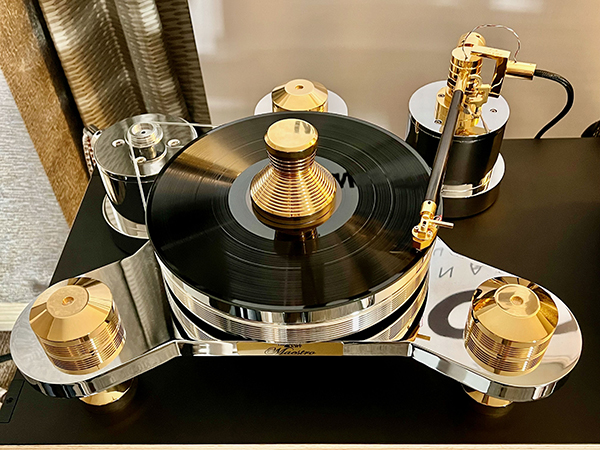
TRIANGLE ART
The Mon Acoustic demo room showed a Triangle Art Maestro turntable ($9,000) with that maker’s own Horus tonearm ($4,400) and Zeus MC cartridge serving as the analog source feeding a Triangle Art P200 phono preamp ($18,000) with a separate power supply, of which the high voltage and filament supplies are passive and heavily filtered.
The Triangle Art P200 tubed phono preamp comes with three phono inputs: one MM or standard level, and two MC ins. The three twin triode tubes are shared between the channels to allow more flexibility for tube rolling. Gain settings are fixed at 45dB for MM, with 26dB added via a step-up transformer for MC input. Standard capacitance is spec’d at 150pF and 47kohms resistive loading for MM carts and (approximately) 100ohms resistive loading for MC carts, but the factory can assist with other resistive and/or capacitive loading options.
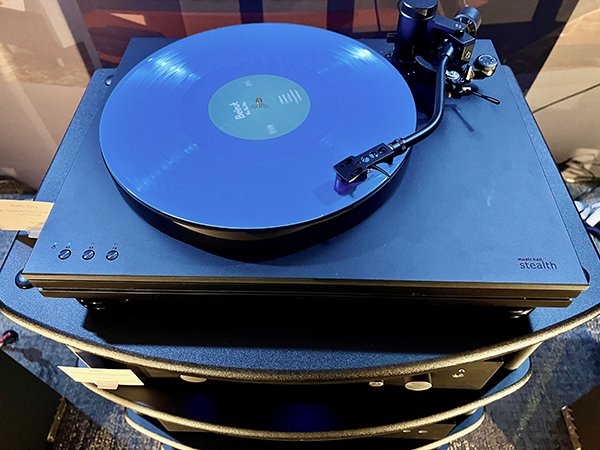
MUSIC HALL
In the short but sweet department, Music Hall showed a Music Hall Stealth, a direct-drive turntable with a handy auto-stop feature ($1,649).
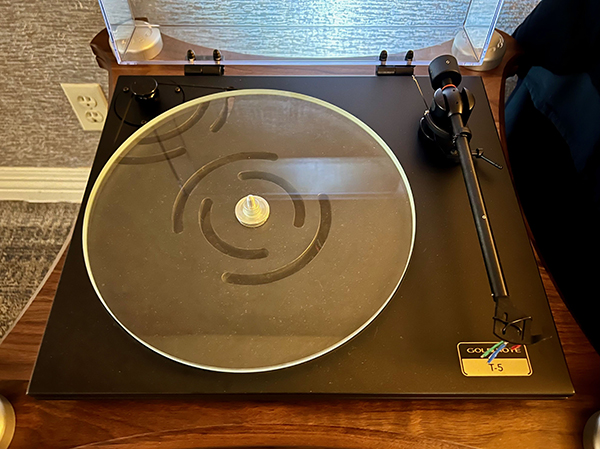
GOLD NOTE
Meanwhile, Italian manufacturer Gold Note introduced on static display their new Gold Note T-5 turntable ($1,199, including tonearm but no cartridge). According to the manufacturer, it was designed with a specific price range in mind — originally in the €1,000 ballpark — to provide an entry point to the maker’s higher-end turntables.
Prior to its debut, the T-5 turntable’s design had undergone several iterations exploring various materials while in development. As for its platter in particular, after trying approximately 60 types of acrylic, the company opted for a glass platter instead, which was seen as a more desirable material for weight and mass. But which type of glass? Five different types of glass were tested before they selected an ultra-clear glass that is more expensive but is said to have less reflection and a higher degree of flatness. The T-5 ’table’s plinth is made of HDF, and its counterweight is brass. The T-5 ’table uses an inverted bearing.
Gold Note also said it worked with 3-D printing for the T-5’s design to help expedite testing and development — a technique that aided in controlling costs to keep the price (almost) in their target range.
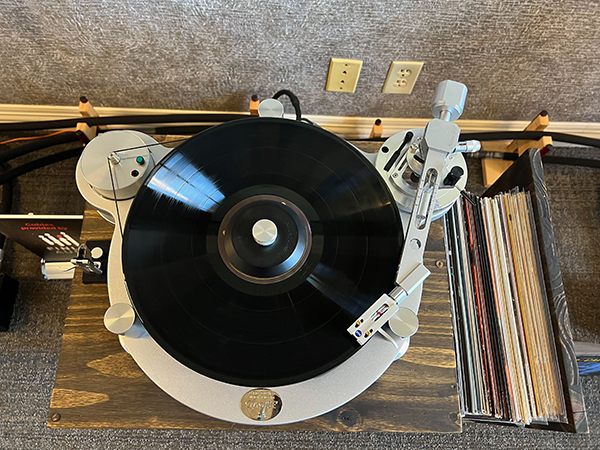
ROBYATT AUDIO, MICHELL ENGINEERING & MIYAJIMA LABS
Robin Wyatt of Robyatt Audio presented a memorable demo in Room 719, with plenty of musical variety and some solid, even surprising requests — Andrew Bird and Phoebe Bridgers singing “I Felt a Funeral in My Brain,” for one. Analog-wise, there was a Michell Engineering Gyrodec SE turntable ($4,000; seen above) with that English maker’s Levi feet ($750) and a Miyajima Labs Carbon stereo cartridge ($3,000) on the end of a Sorane SA1.2 9in tonearm ($1,925). A Miyajima Spirit Mono Pure Diamond cartridge ($1,425) — said to be a “true” mono cartridge, and shown below — was also at the ready, mounted to a second headshell and Sorane (whose brand name was formerly known as Abis) accessory part made for easy switching within the tonearm’s design. Completing the analog mix was a Miyajima KSW step-up transformer ($2,250).
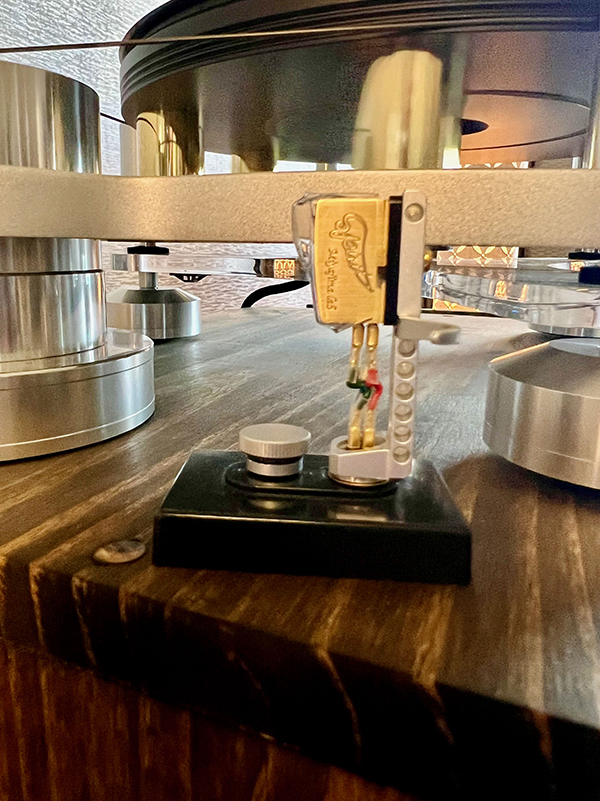
Powering the system was a Java HiFi Single Shot integrated amp ($8,995), a full-featured integrated model with DAC and MM phono, in addition to preamp and 200W amplification per side. Also included are two line-level inputs, as well as USB DAC and Bluetooth connectivity.
Music was played back through new QUAD 2812X electrostatic speakers ($9,995), the first pair in the U.S. of the latest iterations of the company’s 1981 model — and descendants of the classic QUAD 63s. QUAD Electroacoustics, a longstanding British company now owned by the Shenzhen, China-based International Audio Group (IAG), moved production to China, and has more recently made various upgrades for improved sound (and, perhaps, safety). They’ve updated the protection circuitry enabling the speakers to play louder, and reportedly to extend both the bottom- and top-end frequencies and increase clarity. The previous model used to cost $15,000, Wyatt said. New production digs and techniques and shipping via containers has helped bring the price down by about $5K. The Original QUAD 63s weighed 45lbs, whereas these weighed a more substantial 75lbs, made heavier by steel cross-bracing on the back. The old QUAD 63 speakers had a plastic base bolted onto the speaker. Nowadays, the base is made of steel and is welded on, which increases the mass and rigidity of the whole enclosure. (The full system setup at CAF is shown below.)
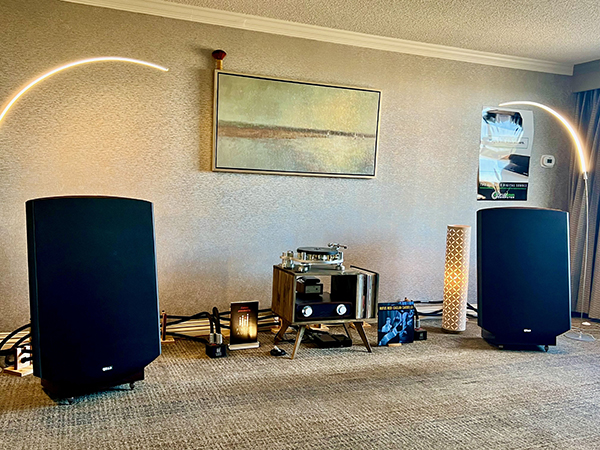
There was plenty of chatter in the crowded room, but from the handful of tracks I heard — having also heard two pairs of original vintage QUAD 63s and QUAD’s previous, “modern” updated model at an AXPONA show some years back — the openness, resolution, and spaciousness stood out on this demo system. For example, Chicago Symphony Orchestra’s Scheherazade, Op. 35: The Sea and Sinbad’s Ship (and other tracks) showed some reported improvements in bass, dynamics, and resolution. The speakers also played comfortably at higher volumes — and gave a decent “disappearing speaker” illusion.
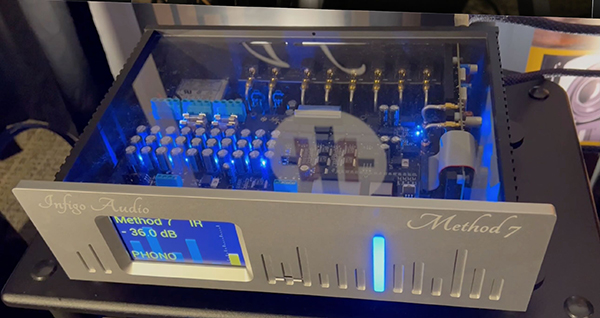
INFIGO AUDIO & VPI
Infigo Audio introduced a new preamp, the Method 7 ($20,000), with built-in phono preamp and flexible features. “Every input can also be connected as an output,” CEO/designer Hans Looman told me, “so you have sort of a matrix. Everything has single-ended and balanced inputs and outputs, so you can convert single-ended into balanced, or vice-versa — balanced into single-ended.”
Everything is fully analog except for the controls, which are on a nice-sized front-panel touchscreen. There you can change volume and switch sources, but also make adjustments to gain and cartridge loading resistance and capacitance. A remote control is also available. Users can program and save settings for all the parameters, which also means you can set up the same overall volume across sources. That way, Looman added, “You get no surprises.” You can even fine-tune the right and left channels for your cartridge. The Infigo Method 7 preamp comes in silver or black, and is available now.
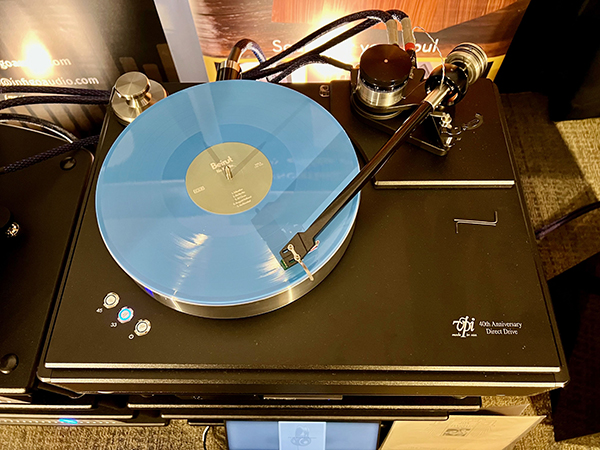
The Infigo Audio demo system also included a VPI 40th Anniversary Direct Drive turntable and arm with a van den Hul Frog Gold cartridge. When I first listened to “Gibralter” (Side A, Track 1) from my copy of Beirut’s 2015-released No No No LP (4AD), the cartridge loading resistance was set lower, but increasing it to 150ohms improved the track’s clarity and sense of separation among vocals and instruments.
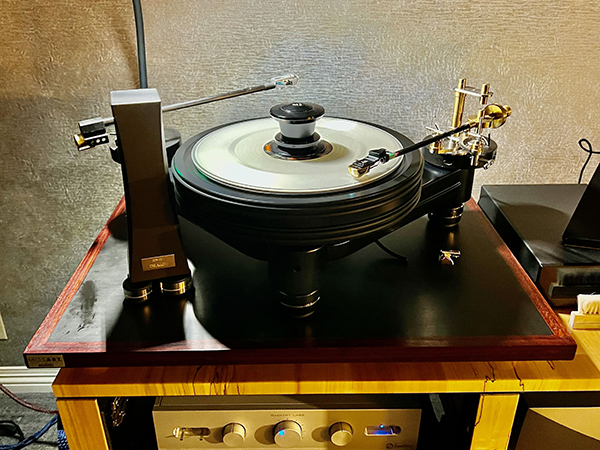
DR. VINYL & PEAR AUDIO
Dr. Vinyl, a.k.a. Jose Ramirez, and Audio Skies presented an elaborate vinyl playback setup in Room 709 (and another in Room 712), and was willing to play some fun — and some non-audiophile-centric — music. There was a Pear Audio Analogue Odar turntable with Cornet 3 tonearm ($17,000), but I actually listened to the second arm mounted on the ’table, the Integrity Tru Glider Brass tonearm ($8,000 — the price that was listed for the special Brass edition, but Dr. Vinyl mentioned $6,000, presumably for the standard model).
Like other Pear Audio turntables, the Odar uses a low-torque AC motor for its single belt drive mechanism that “grabs” from the bottom. Dr. Vinyl gave the high-mass, 14in-diameter platter a manual spin to start the rotation — to release the energy, he said — to start the momentum. (Sometimes, something simple works well.)
He also told me the turntables he appreciates often show a wow-and-flutter measurement of 0.1%, but claimed this Pear Audio Odar turntable measured just 0.07% W&F — a figure that surprised him. The Odar has what he described as a “sacrificial bearing” — he was mum on further specifics — with a very thin film of special oil separating the two hard surfaces of the bearing’s parts creating the friction.
The Integrity Tru Glider tonearm has no bearing; it’s suspended by a thread, free-floating. Dr. Vinyl described its advantages: It helps avoid stylus mistracking and reduces distortion. It’s also said to require less set-up time. Setting cartridge underhang only takes 5 minutes, and you don’t have to worry about setting VTA (vertical tracking angle), as you’re adding or subtracting force just by raising or lowering the arm. At the end of the tonearm was a DS Audio Grand Master EX optical cartridge ($22,500) with its (necessary) companion DS Audio equalizer ($45,000).
The combo of this turntable, tonearm, and DS Audio optical cartridge seemed to suit each other by contributing to sound that felt precise in extracting details, yet was highly musical. Linda Ronstadt’s hugely powerful vocals on “La Cigarra” (from Canciones de mi Padre, originally released in November 1987) sounded pure with no hints of harshness or flinching in delivering her soaring soprano highs. Even a vintage Japanese pressing of Duran Duran’s May 1982 release Rio that Backert Labs’s Andy Tebbe happened to have on hand — an album that seemed to be at least a fairly bright recording — was an enjoyable throwback surprise. Andy Hamilton’s tenor sax solo on the title track (Side 1, Track 1) sounded spot-on in tone, and full of brassy body in 3-D. (More people ventured into the room while “Rio” was playing, btw.)
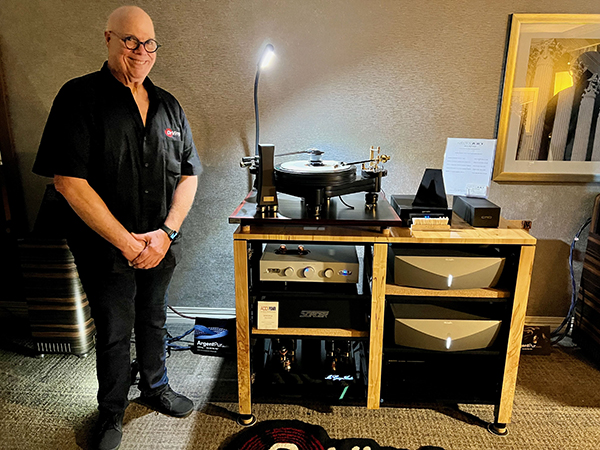
Other components in this demo system (as manned above by Dr. Vinyl) included a Backert Labs Rhythm 1.4 preamp ($12,900), a McGary Audio SA-1E stereo amp ($7,000), a CAD GCD1 ground control unit ($2,200), and a pair of Larsen 9 speakers ($16,999), whose unique design allows them to be placed right up against a wall or in a corner. They sounded far larger than they looked.
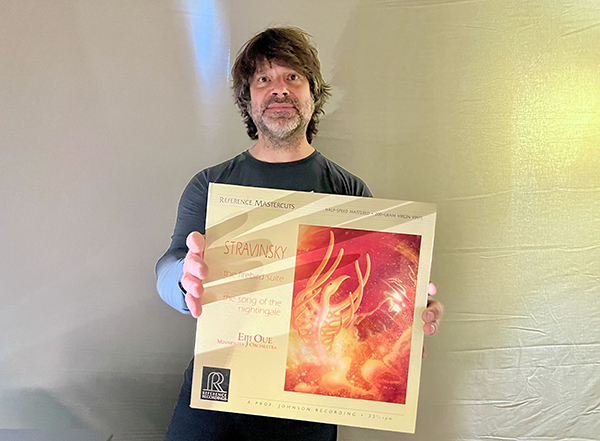
ZU AUDIO
Through a system with a Technics turntable ending in Zu Audio’s Definition 6 flagship speakers ($25,000), I enjoyed a listen to a Reference Recordings LP — a half-speed master on 200g virgin vinyl, as shown above in the hands of Sean Casey — of Stravinsky’s The Firebird Suite played by the Minnesota Orchestra conducted by Eiji Oue. Through that system ending with those Zu Audio speakers on excerpts from that recording, the treble sounded sweet and smooth. Placement of the orchestra’s musician sections was detectable. It was such a good listening experience in this room that I really wanted to stick around longer.
Amplification for the Zu Audio system came from Black Ice Audio. A couple versions of the tubed Black Ice F159 phono preamp (starting at $1,875 and, for examples on demo, extends to $3.189 for the Overdrive package and Iso Acoustic upgrade, or to the top-line Pinnacle Edition at $5,100) were in action here.
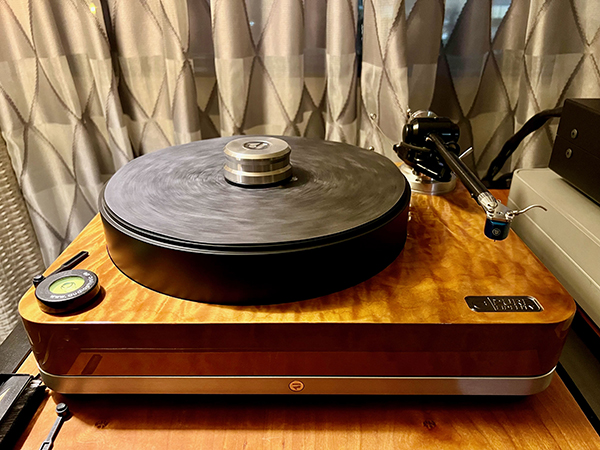
PURE FIDELITY
At least a few Pure Fidelity turntables, which come from Canada, turned up at the show — namely, in a) Now Listen Here’s larger Executive Lounge exhibit room, and b) in Fidelis Distribution’s room, which featured a Pure Fidelity Harmony turntable with Origin tonearm ($9,995), to name a couple. (Now Listen Here also presented the U.S. premiere of the Rega Naia turntable, which I unfortunately did not have a chance to hear.)
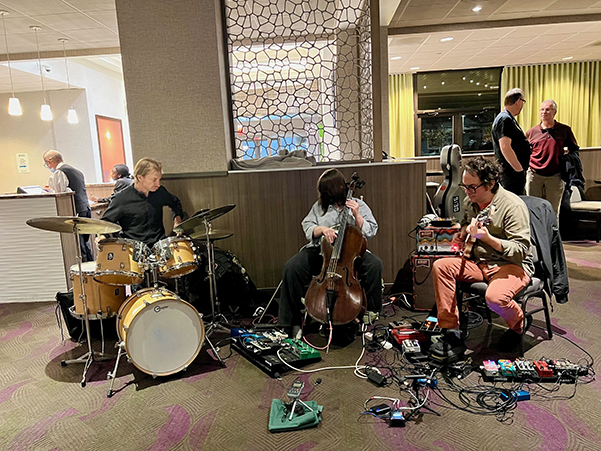
MEET THE ANTHONY PIROG TRIO
Finally, on Saturday night after the show, those who stuck around the CAF venue hotel were treated to a great live music performance of rock-tinged, loop-pedal-laden experimental/avant jazz from the D.C.-based Anthony Pirog Trio, featuring guitarist/composer Pirog (obviously) alongside cellist Janel Leppin (with whom he partners on the Janel and Anthony duo — and in life), and drummer Mike Kuhl. Crossing many genres, Pirog has recently been known for his work with The Messthetics (featuring two former Fugazi bandmembers), and he has collaborated with many other musicians including Andy Summers, Wendy Eisenberg, and John Frusciante.
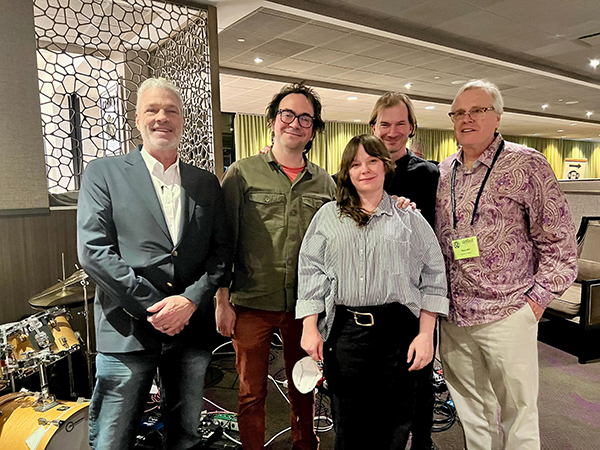
Author bio: Julie Mullins, a lifelong music lover and audiophile by osmosis who grew up listening to her father’s hi-fi gear, is also a contributing editor and reviewer on our sister site, Stereophile, for whom she also writes the monthly Re-Tales column. A former fulltime staffer at Cincinnati’s long-running alt-weekly CityBeat, she hosts a weekly radio show on WAIF called On the Pulse.
If you’d like to see even more of our CAF coverage, check out Part 1 of Julie’s CAF report here, and you can also see Ken Micallef’s turntable-centric video report here.
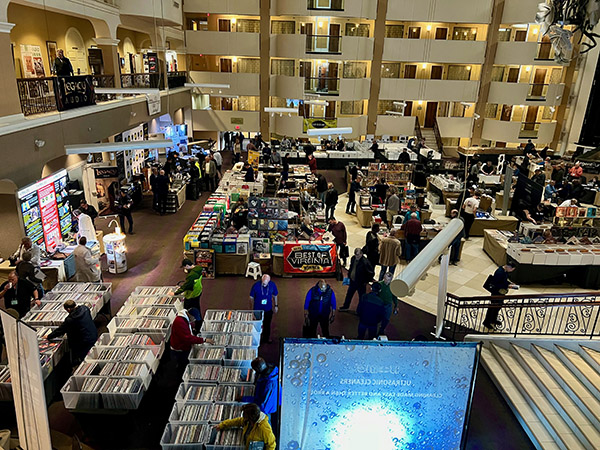
- Log in or register to post comments


This is a great event. I wish I could join it and geometry dash scratch which is awesome


